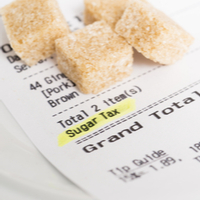
New figures from Public Health England suggest that sugar consumption is far short of government targets. Ministers wanted to reduce sugar content in foods by a fifth by 2020, but the latest statistics show that this is very unlikely to happen.
Despite the introduction of the sugar tax on fizzy drinks leading to a 29% increase in sugar content in cans and bottles of pop, the latest research confirms that we’re actually buying more sugary foods. Between 2015 and 2018, the sugar content of shop-bought foods only decreased by 2.9% and the average person consumed more sugar.
In response to the figures, food industry representatives stated that the target was too ambitious, while health experts accused some manufacturers of being “asleep at the wheel” and failing to tackle the obesity crisis.
The introduction of a sugar tax on fizzy drinks prompted many manufacturers to reduce the sugar content to avoid higher fees, with the average soft drink now containing almost 29% less sugar than in 2015. Despite an increase in soft drink sales, more people are opting for sugar-free and low calorie versions. The changes equate to a reduction of more than 30,000 tonnes of sugar and 5 billion fewer calories.
Although there has been good news on the fizzy drinks front, efforts to reduce the sugar content of shop-bought foods have failed. Public Health England currently has a voluntary scheme in place, which encourages manufacturers to reduce sugar content, but the most recent statistics show that there has been very little in the way of change. The aim was to lower the average sugar content of foods, including products popular with children, by 20% by 2020, but at the moment, there has only been a 2.9% reduction since 2015.
Sue Kellie, from the British Dietetic Association, described the figures as showing a “worrying lack of progress.”